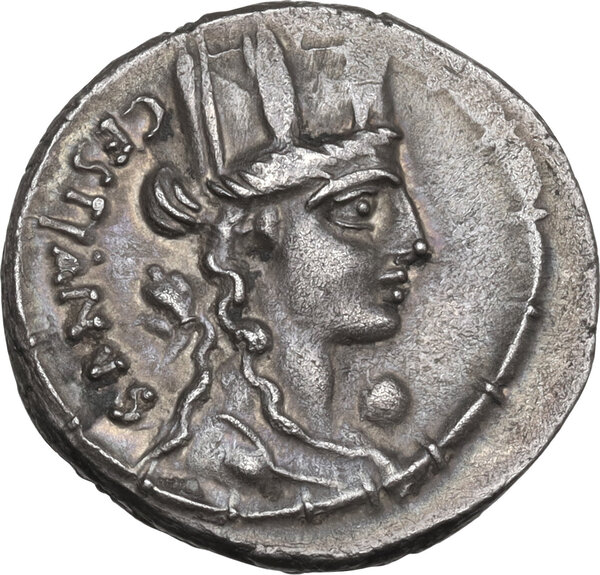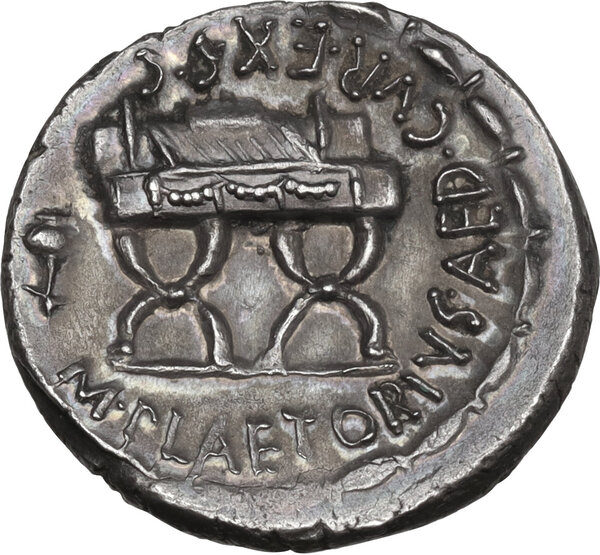Unpublished Control Symbol


Lotto 380:
M. Plaetorius M. f. Cestianus. AR Denarius, 67 BC. Obv. CESTIANVS. Turreted bust of Cybele right; behind, forepart of lion; before chin, globe. Bead and reel border. Rev. M PLAETORIVS AED CVR EX SC. Curule chair; to left, pump drill. Bead and reel border. Cr. 409/2 ; B. 3; Banti 5/9 (stilo). 3.92 g. 19.00 mm. Sound metal and full weight. A superb example, sharply struck on a broad flan. Extremely rare control symbol. Enchanting iridescent old cabinet tone, with reddish hues. EF. The symbol 'pump drill' in this issue is unlisted by Babelon, Crawford and Banti and apparently unpublished. About the same symbol in L.Papius (Cr.384/1, symbol pair 204) cf. CNG 436,2019, 470 and the Andrew McCabe note: ' The symbol on the reverse is a pump drill composed of a drill shaft, a narrow board with a hole through the center, a weight (usually a heavy disc) acting as a flywheel, and a length of cord. The weight is attached near the bottom of the shaft and the hole board is slipped over the top. The cordage is run through a hole near the top of the shaft and affixed to either end of the hole board so that it hangs just above the weight. To use, one hand is placed on the hole board while the other turns the shaft to wind the cord around its length, thus raising the hole board to near the top where the cord becomes taut. Placing the tip against the material to be drilled and held upright, a smooth downward pressure is exerted on the board, causing the drill to rapidly spin. Once the bottom is reached, the weight is relieved, and the drill allowed to rebound, rewinding the cord around the shaft and the process is repeated. [...].' (Andrew McCabe).
Base d'asta € 200
Prezzo attuale € 220
Offerte: 2
Lotto non in vendita
Prezzo attuale € 220
Offerte: 2
Lotto non in vendita





